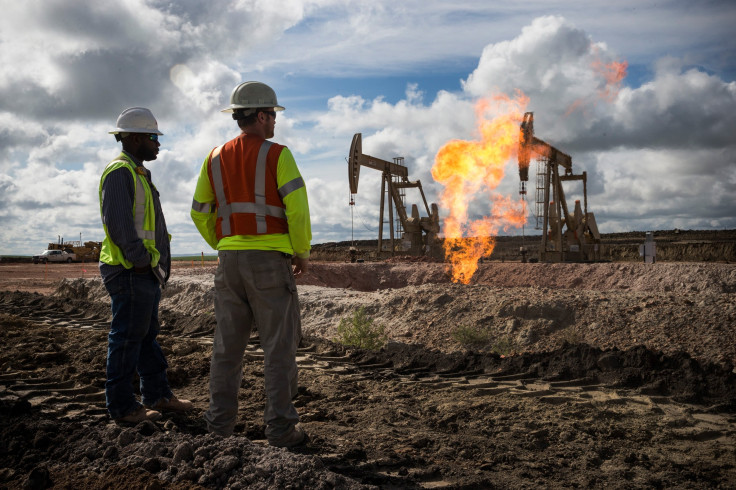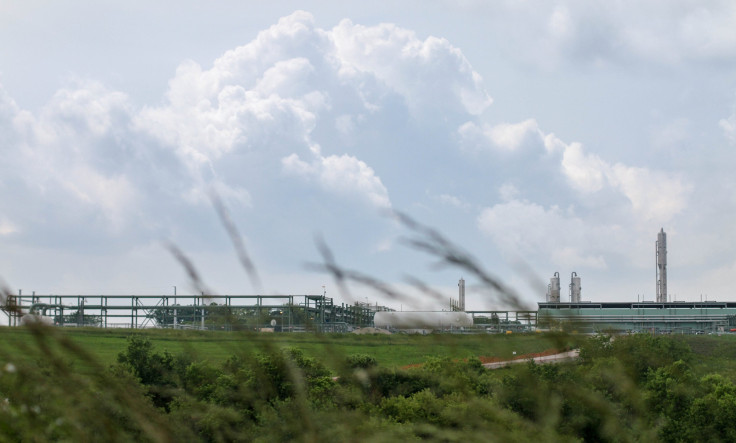EPA Methane Rules For Oil And Gas Companies Won't Target One Of The Largest Climate Change Culprits

The Obama administration's latest proposal for slashing emissions from U.S. oil and gas operations will not target one of the industry's largest sources of methane pollution. The pipes and equipment that bring natural gas from well heads to power plants may emit more methane than any other stop in the supply chain, a new analysis found. Yet the Environmental Protection Agency won't target these existing offenders, only new and modified versions.
Natural gas gathering and collection facilities on the ground today leak around 100 billion cubic feet of gas each year, according to a study by Colorado State University sponsored by the Environmental Defense Fund. Those volumes are about eight times higher than the EPA's own estimates for gas leaks, and result in methane emissions that are nearly 90 percent higher than the government has estimated for the segment.
"Today's study underscores the importance of getting after those existing sources," said Mark Brownstein, vice president of the climate and energy program at the EDF in New York.
Curbing methane pollution is a key part of President Barack Obama’s sweeping plan for tackling climate change across the U.S. economy. The EPA's proposed rules -- the first federal limits on methane emissions from oil and gas operations -- would require operators of new or significantly altered facilities to reduce leaks from well sites, transmission pipelines, storage equipment and other facilities.
The measures could reduce the industry's methane emissions by nearly half over the next decade, Janet McCabe, the EPA’s acting assistant administrator for the Office of Air and Radiation, said on a Tuesday press call. Those cuts will help achieve the Obama administration’s broader goal of cutting oil-and-gas methane pollution by 40 to 45 percent by 2025 from 2012 levels, she said.
Environmental experts this week argued the EPA's proposal is not tough enough to meet that goal, because it doesn't target the thousands of facilities and millions of wells already in place. "This proposal is an important down payment on the commitment to reduce oil and gas methane emissions, but more is going to be needed to be done," Brownstein said.
Mark Johnson, a partner at the California law firm Snell & Wilmer, which advises oil and gas businesses, said the EPA's proposal represents a "middle ground" for industry and environmental groups. "The industry was most concerned about these rules being used to deal with existing sources. Having to replace existing equipment would be much more costly than having to deal with new petroleum and natural gas systems," he said.
McCabe said the EPA expects its rules will cost the industry between $320 million and $420 million to invest in emissions control technologies and monitors.

The Colorado State University study is the first attempt to quantify emissions from an often-overlooked part of the natural gas supply chain. Gathering facilities collect the gas produced by multiple wells in the area and feed the fuel into processing plants or pipelines. The EPA doesn’t track the specific emissions from these facilities, and before the Colorado study, the total number of U.S. gathering facilities was unknown.
“Prior to this study, we didn’t know if there were 1,000 gathering facilities or 10,000,” said Anthony Marchese, a Colorado State professor and lead researcher on the report. The scientists now estimate the country has roughly 5,000 of these plants, which are leaking enough gas to cause the same climate change effects as 37 coal-fired power plants over 20 years.
While methane is less abundant in the atmosphere than carbon dioxide, it is dozens of times more potent as a heat-trapping gas. Climate scientists and EPA regulators in recent years have grown more concerned about methane emissions as U.S. shale oil and gas production soared. In most cases, drilling in shale formations requires hydraulic fracturing, or fracking, a process that leads to methane leaks if production equipment isn’t properly sealed or monitored.
Shale gas production alone surged nearly 800 percent from 2007 to 2013, from about 1.3 trillion cubic feet to 11.4 trillion cubic feet, the U.S. Energy Information Administration found in its most recent estimates. As more shale wells are drilled, more gathering and processing facilities are needed to convert the raw resource into a valuable fuel for powering and heating homes and buildings.
The newly discovered leaks in gathering facilities are eight times greater than the estimates used by the EPA, according to the study, which appeared in the journal Environmental Science & Technology. If counted by the EPA, the agency’s emissions estimates for the natural gas supply chain would rise by about 25 percent.
The Obama administration said it expects to finalize its new oil-and-gas methane rules next year, shortly before Obama leaves office.
© Copyright IBTimes 2024. All rights reserved.




















